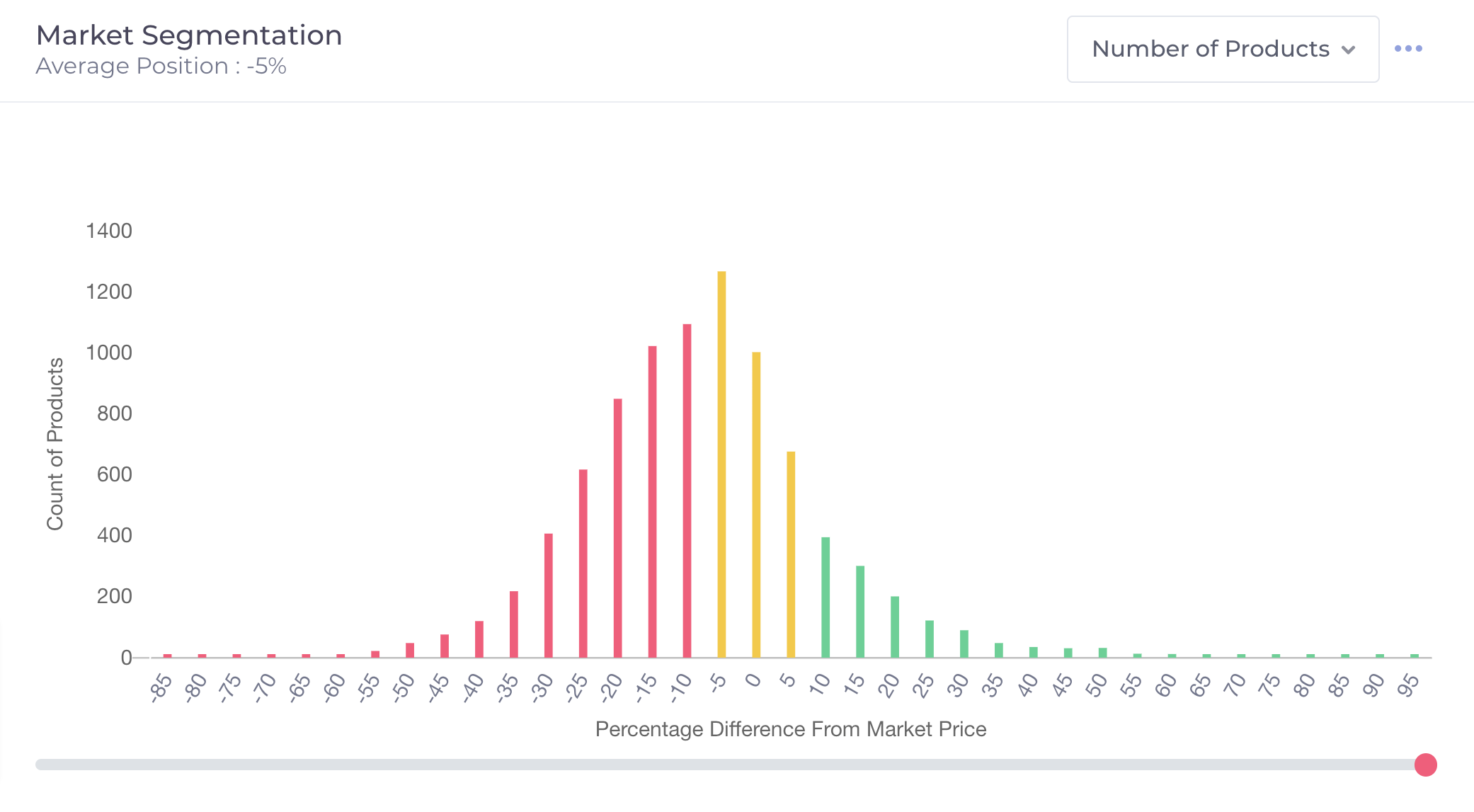What is a Price Test?
Do any of the following questions ring alarm bells in your head?:
-
Are you monitoring your industry, market and competitors so that you are aware of the forces affecting customer demand for your products and services? - Have you thought about whether the pricing strategy you are considering (or currently implementing) is compatible with your overall marketing mix (e.g., online, offline, social media etc.)?
- Do you know which of your products and services are best sellers or slow movers?
- Have you determined which products and services are elastic and inelastic?
- Have you studied competitors’ comparable products or offerings and compared them to yours?
- Are you influenced by changes in your competitors’ pricing policies?
- Do you monitor your competitors’ marketing campaigns, launch strategies and advertising to keep your pricing current?
- Do you order competitor products to examine how they compare to yours?
- Is there a predictable pattern or time of year when your competitor has sales or promotions?
- When was the last time you made significant changes to your pricing strategy to test if that made a difference to your overall profitability or revenues?
- Are you over-reliant on traditional pricing strategies such as cost-plus pricing?
If the alarm bell is ringing, or if you don't know or haven't even thought about the answer to some of the questions, it could be that you have been stuck with the same old (un-tested) pricing strategy for many years now and are reluctant to rock the pricing boat.
However, it's a truth universally accepted by eCommerce companies and academics alike, that by not testing your pricing you are not realising your full revenue potential. Pricing is acknowledged as one of the few business functions which has a direct positive impact on your company's profitability so you'd be reckless in the extreme to bury your head in the sand over this.
To give you an idea of how effectively pricing can influence consumer behaviour (and increase your profits), ponder on the results of a recent study done by three management professors at Yale.

The study gave subjects $1 with which they could either buy one of two packs of gum or keep their money and buy neither. When the researchers priced both packs of gum equally at 63 cents, only 46 percent of subjects made a purchase. By contrast, when they priced the packs of gum at 62 cents and 64 cents respectively, 77 percent of subjects made a purchase.
So, even the slightest variation in price can have a profound impact on your sales, which is why more and more companies are trying to take the guesswork out of pricing strategy by split or A/B testing their prices.
Split testing can give companies insight into what to charge and how to display their prices by revealing how actual customers respond to different pricing scenarios.
Why Price Test?
1. It’s the best way to measure the elasticity of demand
Price Testing allows companies to accurately measure demand
P=MC/(1+(1/Ed)) — where MC is marginal cost, P is price, and Ed is the elasticity of demand reveals the ideal price point, even if that price was not explicitly tested.
2. You can price test different prices at different times to avoid alienating customers
Customer resentment most commonly occurs when companies split test different prices at the same time, alienating customers who learn that they were given the higher price. Alternatively, companies can change prices over time to see which price point customers prefer.
For example, you might offer a product for £50 one month, £60 the next month, and £40 the next. You can then use multivariate regression to control for unconnected factors (e.g., time of year).

3. Strategic pricing levels can help sell products with higher profit margins
Price testing is the best method to determine how to price different tiers of products to sell the most product with the highest profit margin.
Psychologist William Poundstone studied the effect of price on consumers to confirm pricing’s potential. Participants were offered several varieties of beer: cheap, regular, premium, and ultra-premium. When participants could buy the cheap beer for $1.60, regular beer for $1.80, or premium beer for $2.50, only 20 percent opted for the premium beer.
However, when participants could buy the regular beer for $1.80, premium beer for $2.50, or ultra-premium beer for $3.40, 85 percent opted for the $2.50 premium beer, 65 percent more than when it was the highest price point. Companies can discover such massive sales differences most efficiently when they split test various price levels.
How to Execute a Price Test
It’s important to always have a clear vision in place to make sure you are pursuing the right data. Follow a price test framework in order to get the most out of each test. If you have built a suitable framework then testing the different prices shouldn't be too daunting a task.
Setting the parameters to keep the data controlled can take a little bit of work, but it’s worth it in the long run. Testing different prices is the key to price optimisation, as it keeps you as competitive as
Your Testing Framework
1. Know what you want to learn from the price test?
With a price test, you need a specific goal in mind in order to get the most out of your price testing strategy. There are two main goals you can accomplish: one is revenue growth, the other is profit growth. So, for example, your question might be " by pricing 1% below my competitor, will I see a rise in revenue?"
2. Pick Your categories
Once you have a goal in mind, you have to choose the categories in which to test your prices. Look for categories with compelling amounts of volume (at least 1 unit sold per SKU per day) so your results can be easily analysed.
Once you’ve selected the price test group, look for a similar product category to act as a control group and "hold" the prices on the latter. An example would be testing on toasters and controlling on kettles. To make sure the categories are similar, measure their sales growth alongside one another. If the patterns look the same, then they’re ok to test together.
3. Change prices and analyse results
Change prices in small increments to test the market’s sensitivity. Use competitor data as a benchmark for price changes and comparisons. It’s best to price test for 30-60 days and then measure your results. This allows you to build enough volume for a strong analysis.
When it comes to analysing results, use a simple variance analysis that can give you a strong idea of whether your revenue and profit are increasing or decreasing. Measure the difference in daily averages for metrics like revenue and profit before and after your price test. Compare the differences between your test and control group to see how much a new price impacted your bottom line.
4. Make sure you have the right tools to support you
It can be challenging to test new pricing models. BlackCurve enables you to test new pricing models quickly and manage pricing exceptions in a way that does not alienate your customers. The analytics platform gives you a graphical view of price change opportunities and the projected results of any pricing changes.

Staying Flexible
The results of a price test are often positive but the road to price optimisation can sometimes mean dozens of tests and it's an on-going process. Never stop testing because you’ll quickly learn that you can get more out of your prices than you initially thought possible.
Having the most effective pricing strategy means balancing a strong brand identity while also staying flexible based on changes in your unique competitive landscape. This balancing act provides the boundaries within which you can re-price (if necessary), test, and make smarter business decisions based on the results.
Remember, set your goals, identify your target groups, complete incremental changes, analyse the results and have the right software to support you whilst testing. Based on the outcome of continual price tests you will make better data-driven decisions in both the short-term and long-term.
Price testing is only truly feasible with price optimisation software.
Related Posts
When Was the Last Time You Tested Your Prices
4 Reasons to Test Your Pricing TODAY!
Sources
http://blog.wiser.com/price-testing-enables-retailers-make-smarter-decisions/
http://blog.wiser.com/top-5-ways-online-retailers-can-use-competitive-intelligence-drive-value/
http://www.marketingexperiments.com/improving-website-conversion/price-testing.html
http://blog.wiser.com/how-to-build-a-framework-for-price-testing/
http://www.conversionvoodoo.com/blog/2014/08/split-test-pricing-strategy/
https://www.smartstartcoach.com/9-ways-to-test-your-pricing-strategy/




